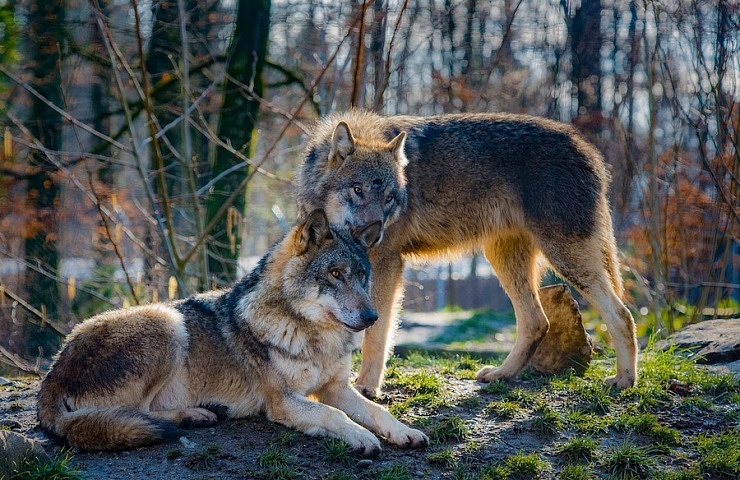The Natural Resources Institute Finland (Luke) published the estimated size of the wolf population in Finland in March 2018. Next the Ministry of Agriculture and Forestry will take a close look at all the relevant data and use this to prepare a new Decree of the Ministry for the hunting year 2018–2019. The process to update the management plan for the wolf population will be launched in August-September, with a broad range of representatives of relevant stakeholders invited to the steering and preparation groups. The work should be completed in spring 2019.
According to Luke’s population estimate, in March 2018 there were 25 wolf packs, of which five moved about or lived on both sides of the Finnish-Russian border. The total number of individuals was estimated at 165 to 190, which is under 10% more than last year. Even if the estimate shows quite a moderate growth in the number of individuals, the number of packs is much larger than a year ago, when it was 14. In addition, significant changes have taken place in the distribution of wolves within Finland. E.g. in Ostrobothnia there are now many more packs than before.
In recent years Luke has done excellent work in developing the monitoring of wolves based on DNA analyses, and Finland will join the European leaders in preparing population estimates. In the Nordic countries Sweden and Norway and in e.g. France and Germany DNA analyses have for several years been used for this purpose. The work that has been done enables Luke to establish an even more accurate picture of the wolf population in Finland, especially with respect to the number of packs and pairs that have established a territory. Wolf observations reported by private citizens also have an important role in estimating the population size.
Now the real number of wolves will be higher than the estimate in the autumn after the breeding season. The average number of pups for females giving birth for the first time is 3.7, for older females it is usually a little higher. Luke is developing a mathematical model that enables to forecast changes in the wolf population also taking account of the number of pups.
Minister of Agriculture and Forestry Jari Leppä considers it important to take account of the views of those living, doing business or spending their leisure time in areas where wolves are also present in the preparation of the new Hunting Decree and updating the management plan. He is really looking forward to the calculation model to be completed at Luke in the autumn and how it can be used to generate estimated trends in the wolf population.
Dialogue hoped to create understanding
The population estimate by Luke will serve as the basis for decisions when the Ministry of Agriculture and Forestry prepares the new decree on wolf hunting. At this point it is too early to give an exact figure to be proposed by the Ministry for the maximum allowable number of wolves to be killed in the hunting year that starts on 1 August 2018. At the end of 2016 when the Ministry issued the previous decree (1335/2016), the wolf population size was estimated at 32 to 38 packs and the maximum number of wolves to be killed was set at 53 individuals a year.
Because of the varying perceptions regarding wolves in Finland, population management is quite a challenge. One of the most widely discussed topics is the population size, i.e. the number of wolves in Finland. The aim of the Ministry is that the public hearing relating to the Hunting Decree and the process to update the management plan together with the relevant stakeholders to be launched in the autumn create a forum for open dialogue and taking the different perspectives associated with wolves into account in the discussion.
The Ministry proposes that in future the number of wolf packs and pairs, instead of individuals, would be used for population estimates. This is the case in some other countries, including Sweden and Germany, and it would improve the comparability of the annual population estimates. The number of wolves is the lowest in March after the hunting season and before the next breeding season. The total number of individuals varies during the year as the pups are born and due to the movement of young wolves.

 Deutsch
Deutsch




Leave a Reply